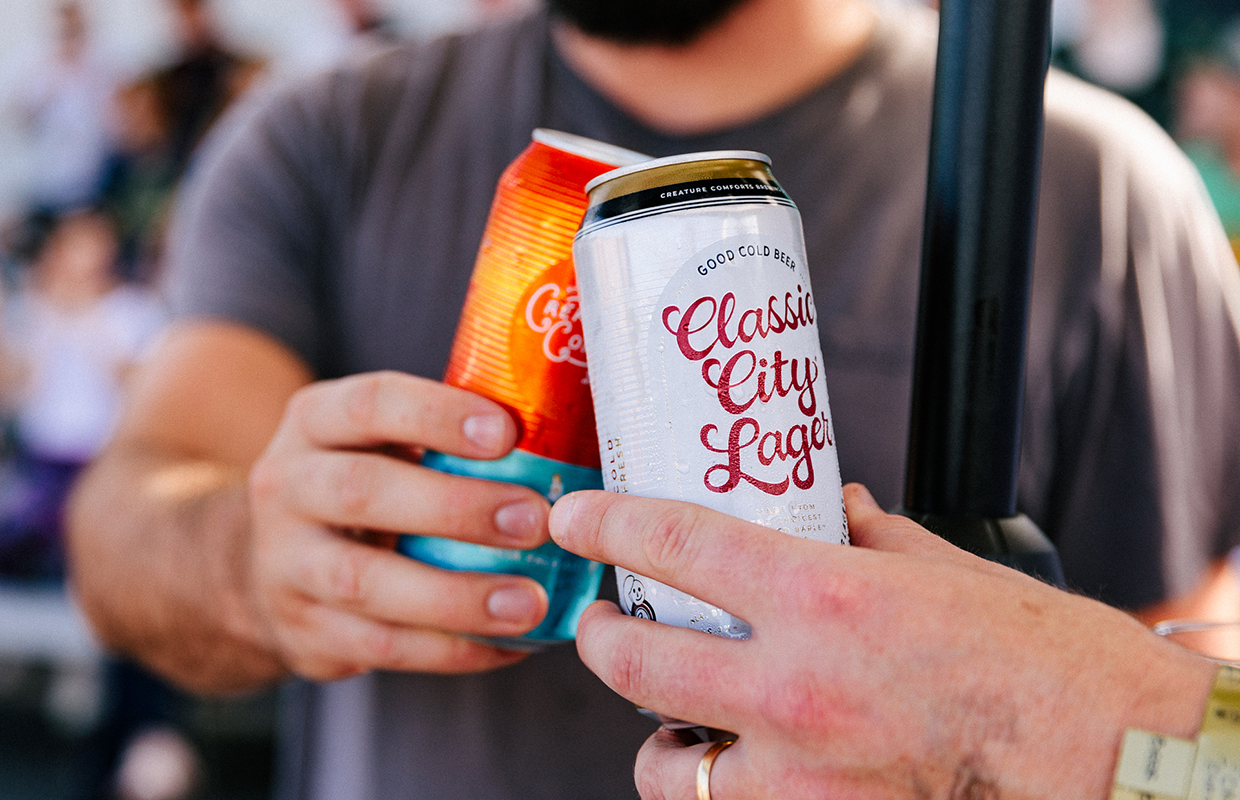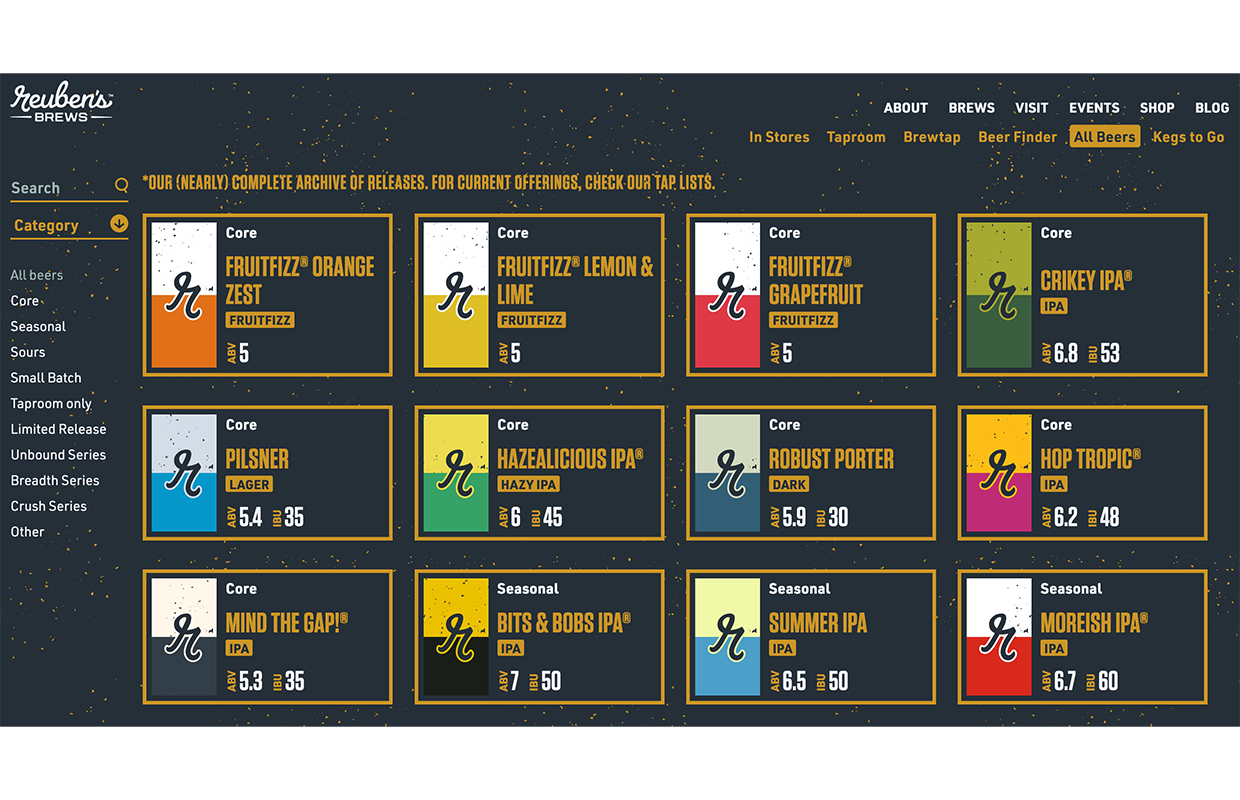
A brewery that looks to thrive in a competitive landscape must prioritize the establishment of a top-notch sales program. Such a program not only drives revenue growth but also facilitates market penetration, brand awareness, and competitive advantage.
By strategically creating targeted markets, fostering strong relationships with distributors and retailers, and leveraging data-driven decision-making, your brewery can unlock opportunities for long-term growth and operational efficiency. Having that robust sales program is essential for any brewery that needs to adapt, innovate, and solidify its position.
“As the craft beer landscape changes we have found it more and more important to arm our team with data and fact-based selling material,” said Seth Talmon, Sales Director at Lawson’s Finest Liquids. Talmon pointed out that everything from draft calculator apps, VIP weekly training opportunities, and Nielsen scan data to demonstrate profitability and velocity have all been helpful.
“Some of this may seem a little basic but we feel at Lawson’s Finest that getting back to the basics and meeting our retailer partners at their counter and understanding their business is giving us a leg up,” he said.
Indeed is taking that step-back approach and refiguring as well as the company has matured, said CBO Ryan Bandy.
“We’ve actually been talking internally a lot about getting better at market research,” he told Brewer. “It’s hard to do as a smaller company. It’s always complicated to try and balance your own opinion, the anecdotes you get from the retail market, and then the sales data.”
Seismic Brewing creates its focus on Northern California ingredients and beer made every day for immediate consumption. For those two reasons, Breanne Heuss, Director of Marketing for Sonoma Craft (of which Seismic is a part) said it helps the brewery focus on sustainable brewing that stays focused on Northern California as its target market.
Understanding and learning about a target market if you do look at a larger reach of consumers — not just within Indeed’s current portfolio — Bandy said they use a lot of trend data in the wider food and beverage industry.
“What type of snacks are becoming popular? Or what kind of flavor trends do we see in coffee drinks or cocktails or wines,” Bandy said. “What are the qualities of those flavors: tart? Sweet? Extra carbonated?”
With that, looking to ensure that your brand is prominently displayed and well-organized in a retail space is a big part of boosting visibility. Signage, displays, and creative merchandising techniques can help attract customers’ attention.
“We provide updated brand standards annually to ensure our brand is properly displayed and priced, and that our items are organized on the shelf in priority order,” Heuss said. “We heavily rely on our updated packaging to attract consumers’ attention.
“Packaging is the most effective way to stand out in a sea of products. This is why we chose a distinct black and white package with a large, bold vertical logo.”
The traffic of an off-prem location can mean understanding not just the real estate of a sales location, but the traffic flow to maximize coverage.
“Our brand has a lot of fun imagery, and we’ve always tried to get our brand on permanent pieces,” Bandy said about Indeed’s strategy. “We always want the highest-traffic area in a store.”
He said he has worked at training his team to take some time every few months to just hang out at a location to view the flow of people in the location.
“Take about 20 minutes at accounts and just watch the traffic pattern,” he said. “Watch how people come in the door, see where their eyes look, where do they walk, what they grab, what gets in their way, and such.
“That will tell you where you want your stuff. Sometimes it’s totally different than you’d expect.”
Bandy recalls a Total Wine that had 10 cooler-door spots, prime real estate for craft to want to be located in.
“I watched like 30 people in a row grab their beer from a warm aisle that was close to macro beer, and not even go down the cooler aisle,” he said. “We had some of the best placement but in an area that people didn’t even see.
“It’s all about where people are going to and shopping from, and finding ways to grab their attention where they are at.”
Lawson’s Finest is committed to a 100% cold supply chain and Talmon said they require beer to be kept cold, not only with distribution partners, but sold in the cooler at retail too.
READ MORE: These Production & Sales Strategies Help Printshop Drive Business
“With that in mind we are focused on driving the consumer past the big warm displays and to the cold shelf or beer cave,” he said, while adding that some successes of signage and POS have been push/pull stickers for the cave, floor decals that lead consumers to the cooler door and branding that leans into the brewery’s commitment to a cold product.
Collecting feedback from customers to be able to use it to inform your future decisions in marketing strategies can be important as well and Bandy said it’s another vital piece that is always under the microscope to do better.
“We aren’t super good at it right now,” he admits. “We’ve tried QR codes on one-off beers or new beverages that bring people to a feedback form to tell us what they think; it’s worked to varying degrees of success.
“I think we’d like to be able to get some more invested, curated feedback from customers.”
But, he cautioned, it’s definitely a balance of input because the most passionate are the loudest.
“Anytime we get rid of a beer there’s someone who says, ‘But that was my favorite beer! How could you get rid of it?!’ Well, the answer is, if it was more people’s favorite beer, we wouldn’t have gotten rid of it,” he said. “So anecdotal feedback and stories can be a tough thing to wade through.”
Yet, those stories to salespeople can be extremely important tentacles to Indeed, or any other company.
“They are at the frontline, hearing real-time data, and it’s their job to collect that and bring it back to us carpet-walkers,” Bandy said. “Salespeople need to know it’s their job to be representatives of their accounts and people drinking our beer.
“Don’t stay quiet when you’re seeing something in the market.”







Be the first to comment